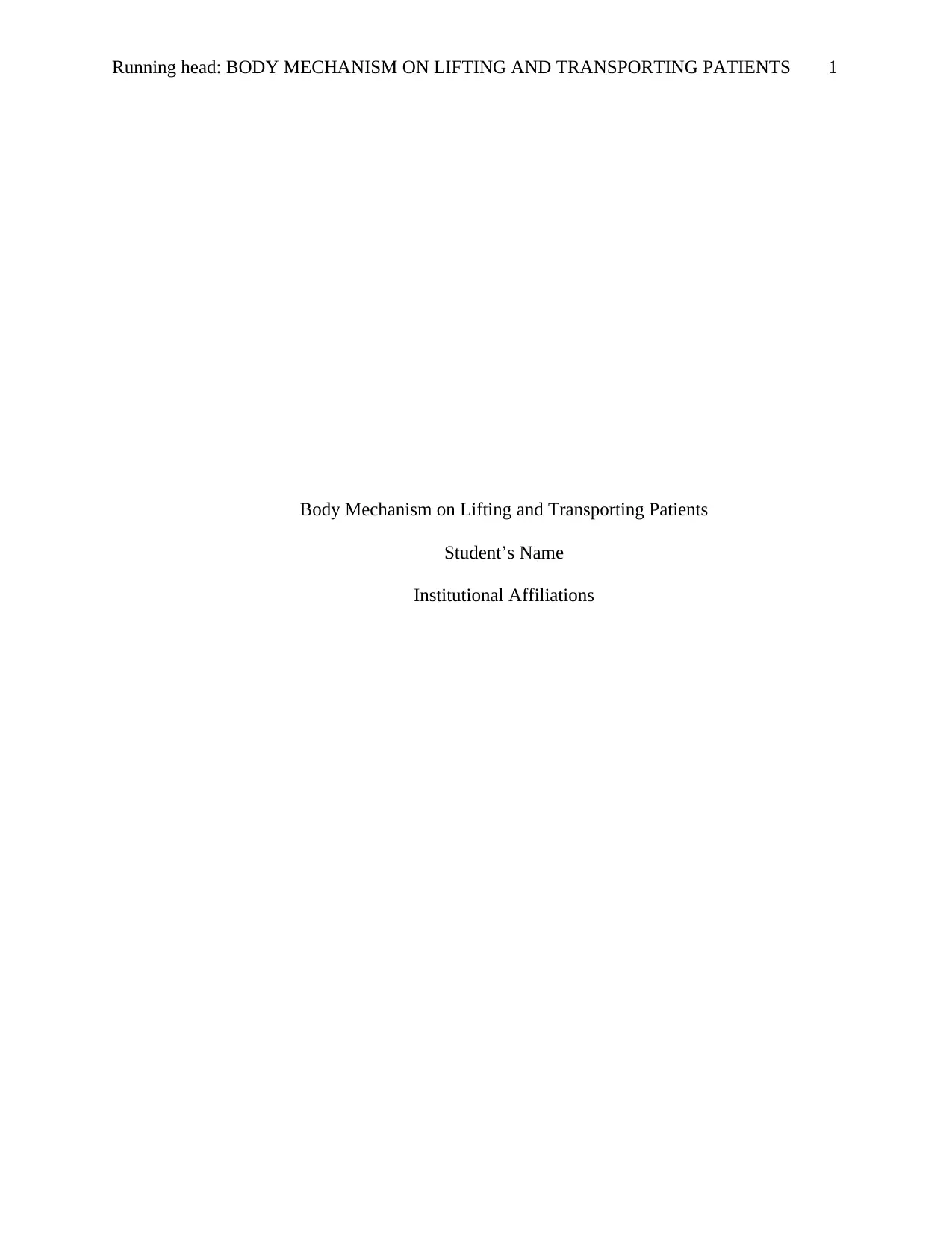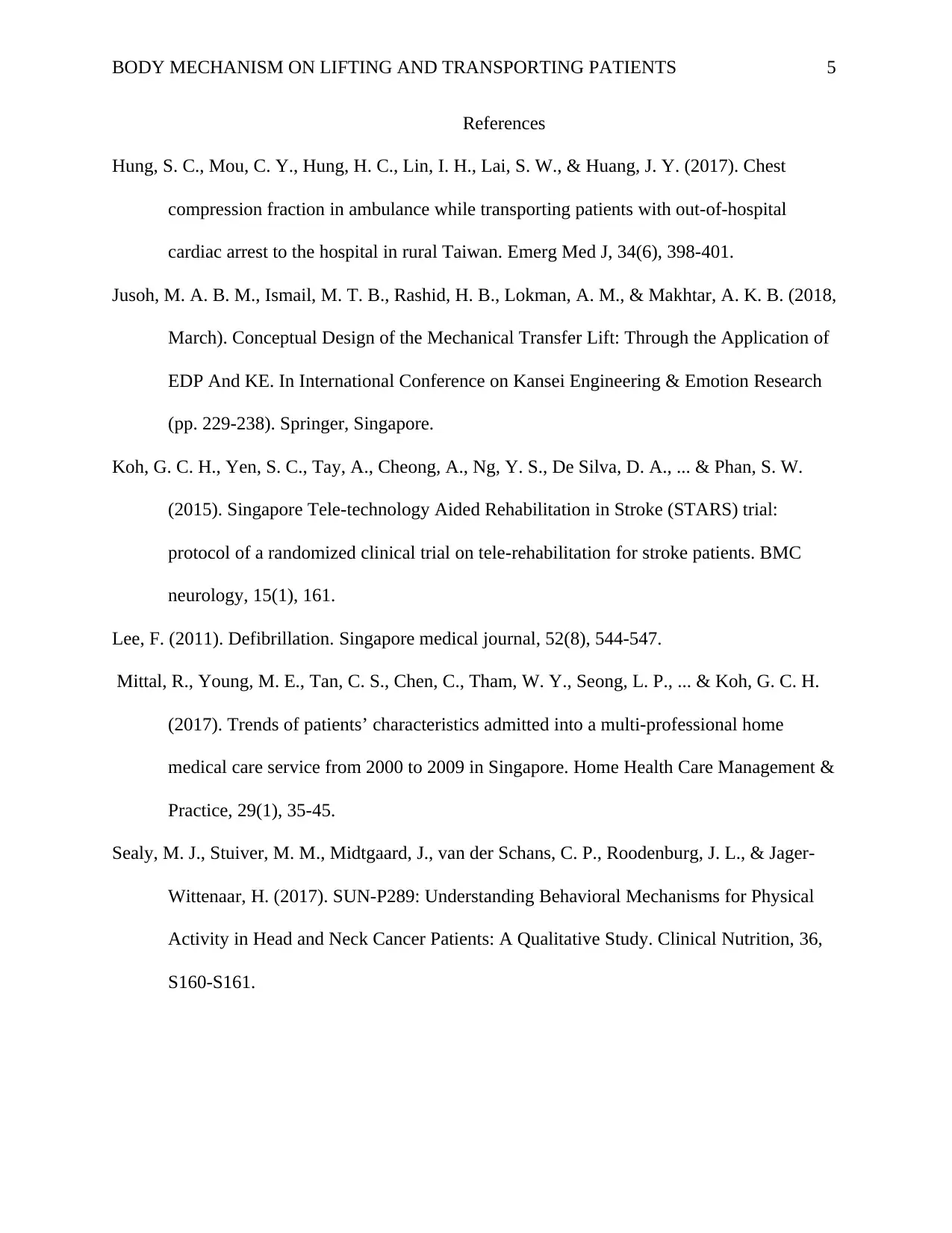Importance of Body Mechanics in Lifting and Transporting Patients
VerifiedAdded on 2021/05/31
|6
|1170
|51
Report
AI Summary
This report delves into the critical role of body mechanics in the safe lifting and transportation of patients within healthcare settings. It emphasizes the importance of proper techniques to prevent injuries to both patients and healthcare providers, focusing on spinal health and overall well-being. The report outlines key principles, including maintaining a straight and stacked body posture, keeping the weight close to the body's center of gravity, and utilizing abdominal, buttock, and leg muscles for lifting. It also highlights the potential consequences of improper body mechanics, such as spinal stress and degeneration. The report underscores the necessity for healthcare professionals, particularly nurses, to understand and practice these principles to ensure safe and effective patient handling, ultimately contributing to improved patient outcomes and a reduced risk of workplace injuries. The report also contains figures on hospital safety, body mechanism and patient transportation. The report concludes with a review of lifting and transfer as a routine work for nurses and the need for correct posture of the patient before lifting and transportation to avoid any injuries.
1 out of 6













![[object Object]](/_next/static/media/star-bottom.7253800d.svg)